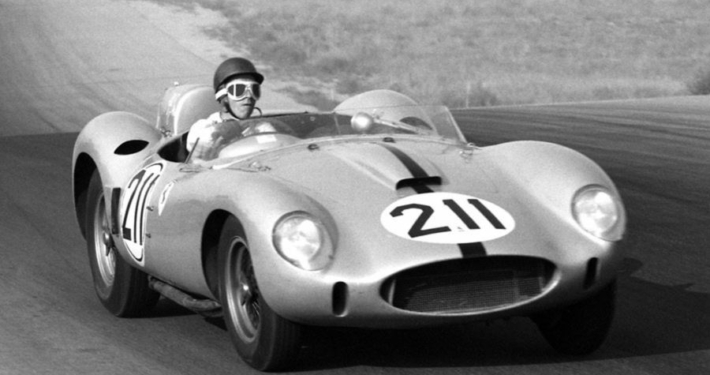Ferrari 312 S
The Ferrari 312 S was a sports car developed by Ferrari in the 1960s. It was specifically designed for endurance racing and marked an important evolution in Ferrari’s racing car lineup. Here’s a discussion about the Ferrari 312 S:
The 312 S made its debut in 1969 as a successor to the Ferrari 312 P. It was developed to compete in the World Sportscar Championship and various endurance races, including the iconic 24 Hours of Daytona and the 12 Hours of Sebring. The car was based on the Ferrari 312 Formula 1 car and shared several components and design elements with its racing counterpart.
One of the key features of the Ferrari 312 S was its mid-mounted V12 engine. The car was powered by a 3.0-liter V12 engine, which produced around 450 to 470 horsepower, depending on the specific model and tuning. The engine featured a four-camshaft design (two per cylinder bank) and was equipped with fuel injection, contributing to its impressive power output. The use of a V12 engine provided excellent performance and a thrilling exhaust note, which became synonymous with Ferrari’s racing heritage.
Design
The chassis of the Ferrari 312 S was constructed using a tubular spaceframe design, which ensured optimal strength and rigidity while keeping weight to a minimum. The bodywork was aerodynamically designed, featuring sleek lines and a low-slung profile to enhance the car’s performance on the racetrack. Suspension components were carefully tuned to provide precise handling and stability during high-speed racing.
However, despite its achievements, the Ferrari 312 S had a relatively short competitive lifespan. Changes in racing regulations and Ferrari’s increasing focus on Formula 1 racing led to the car’s retirement from the endurance racing scene. Nonetheless, the Ferrari 312 S remains a highly regarded and sought-after car among collectors and enthusiasts due to its historical significance and its connection to Ferrari’s racing legacy.
Only 312 S ever built was chassis no. 0744 (chassis design type 524) and was powered by a Tipo 142 engine with twin overhead camshafts.
Its only race was the Spa-Francorchamps Grand Prix on May 18th 1958 from which Olivier Gendebien was forced to retire with gearbox woes on the fourth lap.
After that the car was modified and renamed the 412 S.
In summary
The Ferrari 312 S was a remarkable sports car developed by Ferrari for endurance racing in the late 1960s. It featured a mid-mounted V12 engine, advanced aerodynamics, and a lightweight chassis. The car’s successes on the racetrack showcased Ferrari’s commitment to performance and solidified its reputation as a dominant force in motorsports.
Ferrari 312 S Technical Specifications
Year of Manufacture – 1958
| ENGINE | ||
| type | front, longitudinal 60° V12 | |
| bore/stroke | 73 x 58.8 mm | |
| unitary displacement | 246.10 cc | |
| total displacement | 2953.21 cc | |
| compression ratio | 9.4 : 1 | |
| maximum power | 235 kW (320 hp) at 8400 rpm | |
| power per litre | 108 hp/l | |
| maximum torque | – | |
| valve actuation | twin overhead camshaft per bank, two valves per cylinder | |
| fuel feed | six Weber 42 DCN carburettors | |
| ignition | single spark plug per cylinder, two magnetos | |
| lubrication | dry sump | |
| clutch | multi-plate | |
| CHASSIS | ||
| frame | tubular steel | |
| front suspension | independent, unequal-length wishbones, coil springs, telescopic shock absorbers | |
| rear suspension | de Dion, twin radius arms, transverse leaf spring, telescopic shock absorbers, anti-roll bar | |
| brakes | drums | |
| transmission | 4-speed + reverse | |
| steering | worm and sector | |
| fuel tank | capacity 196 litres | |
| front tyres | 6.00 x 16 | |
| rear tyres | 7.00 x 16 | |
| BODYWORK | ||
| type | two-seater spider | |
| length | – | |
| width | – | |
| height | – | |
| wheelbase | 2350 mm | |
| front track | 1328 mm | |
| rear track | 1310 mm | |
| weight | 750 kg (kerb) | |
| PERFORMANCE | ||
| top speed | 280 km/h | |
| acceleration 0-100 km/h | – | |
| 0-400 m | – | |
| 0-1000 m | – | |
Ferrari 312 S Valuations
In 2018 chassis 0744, the only 312s now a 412S, sold for nearly $6 million at auction

